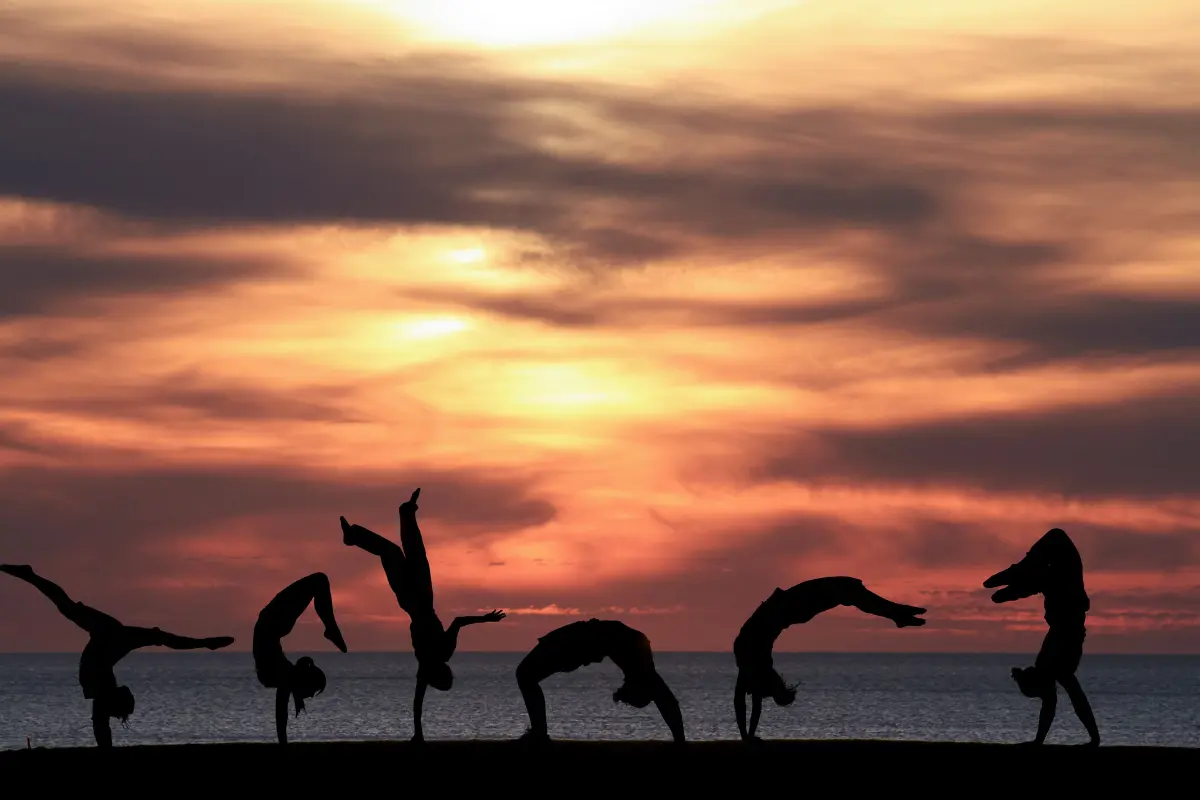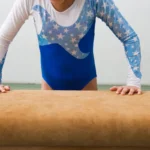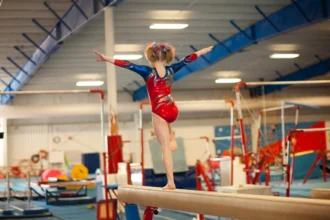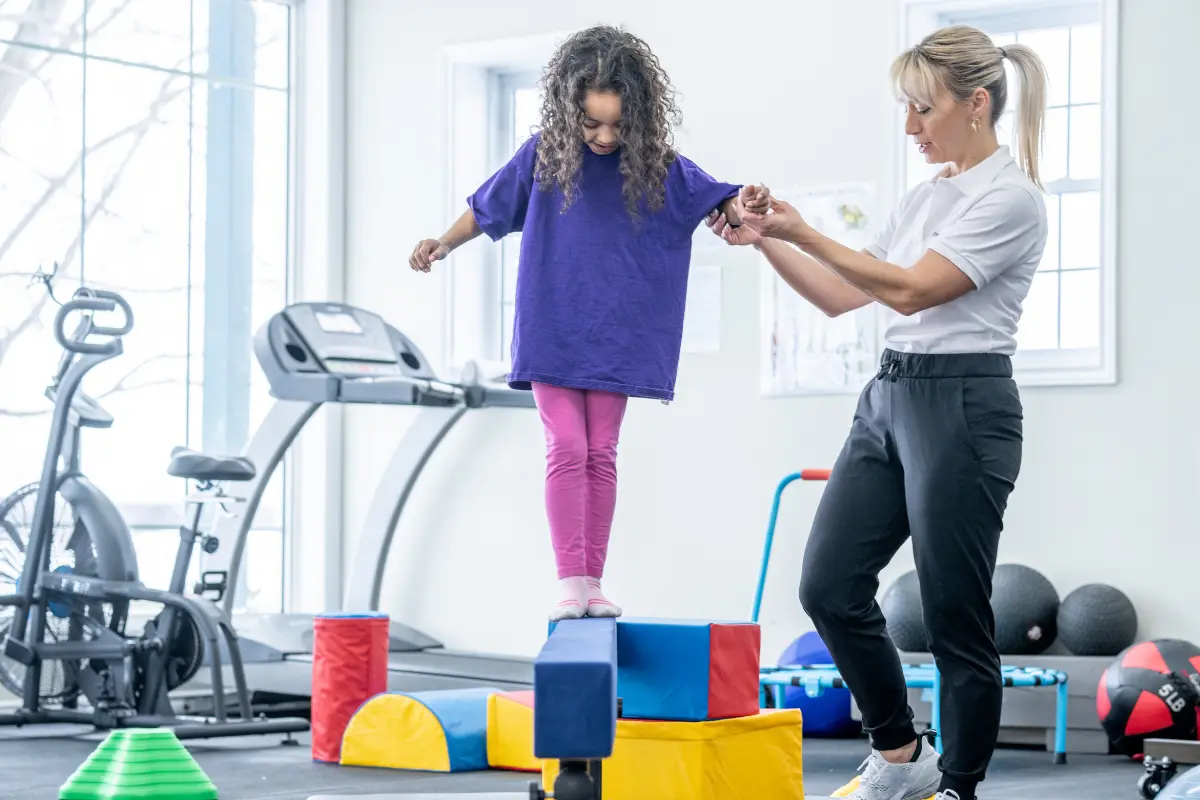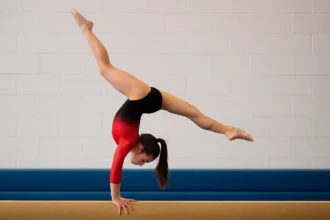Ready to upgrade your tumbling game from “pretty good” to jaw-dropping?
This list is for you.
These nine tumbling tricks are perfect for gymnasts, cheerleaders, dancers, trickers—or anyone who loves flipping with style. They range from classic crowd-pleasers to lesser-known moves that make people stop mid-sentence and ask, “Wait… how did you do that?”
You don’t have to be elite. With proper training and progression, most of these skills are achievable, and every single one delivers serious wow factor.
Quick Overview: Crowd-Worthy Tumbling Tricks
| Trick | Difficulty | Short Description | Crowd-Wow Factor |
|---|---|---|---|
| Valdez | ★★☆☆☆ | Back walkover from sitting | Medium – Unexpected & graceful |
| Dive Roll | ★★☆☆☆ | Long forward dive into roll | Medium – Stunt-style drama |
| Aerial Cartwheel | ★★★☆☆ | No-handed cartwheel | High – Hands-free flipping |
| Side Aerial | ★★★☆☆ | Sideways aerial with flow | High – Smooth & stylish |
| Barani | ★★★☆☆ | Front flip with half twist | High – Twist surprise |
| Roundoff BHS Back Tuck | ★★★★☆ | Classic tumbling combo | High – Fast & explosive |
| Cheat Gainer | ★★★★☆ | Side takeoff into backflip | Very High – Looks impossible |
| Standing Full Twist | ★★★★☆ | Standing backflip + full twist | Very High – Pure power |
| Punch Front Step-Out to Full | ★★★★★ | Forward flip into twisting backflip | Very High – Complex & flashy |
1. Valdez
A graceful back walkover from a sitting position
The Valdez is a hidden gem in tumbling. It blends flexibility, strength, and drama into one smooth motion. Think of it as a back walkover, but instead of starting on your feet, you begin sitting on the floor, then flip yourself backward all the way to standing.
Why it wows:
No one expects a full backward skill from a seated position. It starts slow and elegant… then suddenly you’re standing.
How it works:
- Sit with knees bent and one arm planted behind you
- Push through the arm and opposite leg into a bridge
- Kick the free leg over your head
- Finish like a back walkover, landing one foot at a time
It’s essentially a one-armed back walkover from the floor, requiring strong shoulders, flexible hips, and solid core control.
Tip to learn:
Master bridges and back walkovers first. Shoulder mobility and core strength make this skill feel smooth instead of forced.
🎥 https://www.youtube.com/shorts/M9O3KKDDfEU
2. Dive Roll
A forward dive with stunt-level drama
The dive roll is simple but it looks cinematic. You leap forward like a superhero, stay stretched through the air, and transition into a controlled roll. Action movies and parkour films love this move for a reason.
Why it wows:
Big airtime + smooth landing = instant stunt-double vibes.
How it works:
- Start standing with arms reaching forward
- Jump forward in a long, extended “dive”
- Tuck your chin at the last moment
- Roll smoothly through your shoulders and stand up
The secret is timing, stay extended long enough to look fearless, then roll just in time.
Tip to learn:
Build from forward rolls. Add distance gradually and practice on soft mats while learning.
🎥 https://www.youtube.com/shorts/m8pJpx07b-g
3. Aerial Cartwheel
A no-handed cartwheel that looks like flight
The aerial cartwheel is one of the most iconic skills across gymnastics, cheer, and dance. You cartwheel sideways without touching the ground, pure lift, rotation, and confidence.
Why it wows:
Going upside down without your hands never gets old. It looks floaty, fast, and fearless.
How it works:
- Use a strong run or hurdle
- Swing the leading leg aggressively upward
- Drive the trailing leg through
- Rotate sideways while staying airborne
- Land one foot at a time
Speed and leg drive matter more than flipping power here.
Tip to learn:
Practice drills that gradually reduce hand contact. Elevated surfaces help build confidence early on.
🎥 https://www.youtube.com/shorts/gNeMYXIsKRE
4. Side Aerial
A smoother, more elegant hands-free flip
The side aerial feels like the aerial cartwheel’s graceful cousin. It’s controlled, floaty, and often used in dance-style gymnastics routines because of how effortlessly it flows.
Why it wows:
It’s quiet, clean, and stylish, people often don’t even realize you never used your hands.
How it works:
- Start with a hurdle or run
- Lift the lead leg high
- Keep your torso upright longer
- Rotate sideways through the air
- Land softly, one foot at a time
Flexibility and balance give this skill its signature smoothness.
Tip to learn:
Strong cartwheel technique plus flexibility work makes learning this much easier.
🎥 https://www.youtube.com/shorts/ZNe0LXpR-2I
5. Barani
A front flip that lands backward
The Barani is a front tuck with a half twist, meaning you take off facing forward and land facing backward. It’s sleek, quick, and extremely satisfying when it clicks.
Why it wows:
Your audience expects a forward landing, then suddenly you’re facing the opposite direction.
How it works:
- Punch or run like a front tuck
- Jump forward with tight form
- Add a late half twist through shoulders and head
- Spot the landing and finish backward
It’s a great transition skill into backward tumbling passes.
Tip to learn:
Perfect your front tuck first. Add the twist late, not immediately off the ground.
🎥 https://www.youtube.com/shorts/TfodH4JtZbo
6. Roundoff Back Handspring Back Tuck
The classic power combo
This is one of the most recognizable tumbling passes ever. Fast, explosive, and clean, it’s often the first “real” tumbling combo people aim to master.
Why it wows:
When done well, it looks like one continuous blur of motion.
How it works:
- Strong roundoff to generate speed
- Snap into a back handspring
- Jump up into a tight back tuck
- Open and land with control
Momentum and timing make or break this pass.
Tip to learn:
Solid roundoff + BHS first. Train standing back tucks separately before combining.
🎥 https://www.youtube.com/shorts/swlbCZD_6MY
7. Cheat Gainer
Side takeoff, backflip finish—tricking style
The cheat gainer looks unreal. You step sideways, swing through, and somehow flip backward without a traditional jump.
Why it wows:
It breaks people’s brains. Sideways entry, backward flip. It shouldn’t work, but it does.
How it works:
- Use a sweeping “cheat” step
- Swing arms and leg to generate lift
- Flip backward on an off-axis path
- Spot and land smoothly
This skill travels horizontally and feels totally different from standard flips.
Tip to learn:
Trampoline drills help build confidence. Keep your chest up during takeoff.
🎥 https://www.youtube.com/shorts/VUZ_bKfLEXg
8. Standing Full Twist
No run. No setup. Just power.
A standing full is a backflip with a full 360° twist, done from a standstill. It’s a benchmark skill for advanced tumblers.
Why it wows:
No momentum. No excuses. Just jump, flip, twist, land.
How it works:
- Jump straight up from standing
- Initiate a backflip
- Add the full twist through shoulders and arms
- Stay tight and spot the landing
Timing is everything, too early or too late, and it gets messy.
Tip to learn:
Master standing back tucks first. Build twist control gradually.
🎥 https://www.youtube.com/shorts/bXoeyBGB9s8
9. Punch Front Step-Out to Full
Forward flip → backward twisting flip
This combo flips direction mid-pass and finishes with a full twist. It’s fast, powerful, and incredibly satisfying.
Why it wows:
Forward flip… backward flip… with a twist. Enough said.
How it works:
- Punch front tuck with a step-out landing
- Immediately rebound backward
- Perform a full twisting back layout
- Land tall and controlled
The magic is in the transition, no pause, no hesitation.
Tip to learn:
Train each skill individually. Focus on quick rebounds and clean direction changes.
